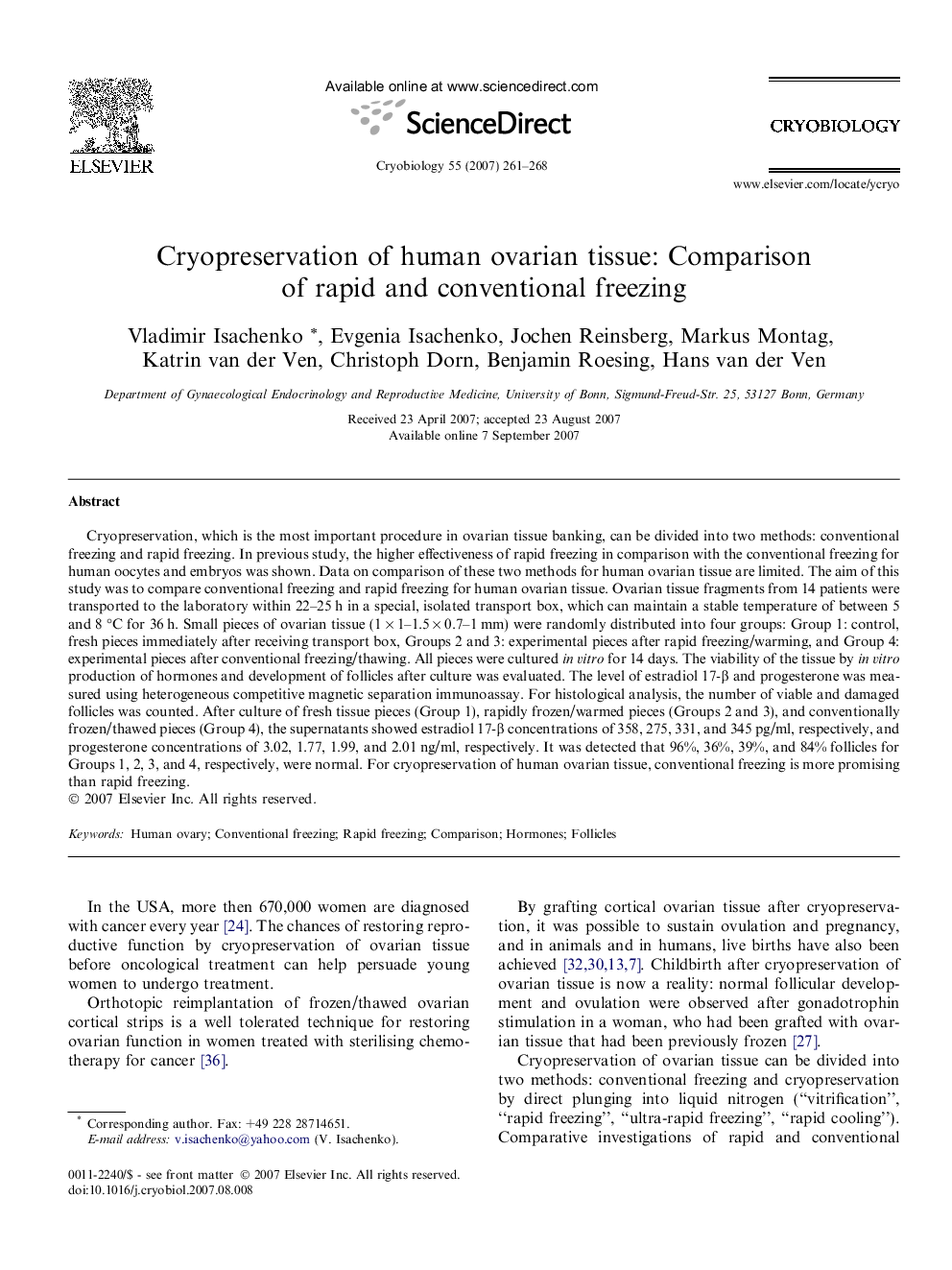| Article ID | Journal | Published Year | Pages | File Type |
|---|---|---|---|---|
| 2169332 | Cryobiology | 2007 | 8 Pages |
Cryopreservation, which is the most important procedure in ovarian tissue banking, can be divided into two methods: conventional freezing and rapid freezing. In previous study, the higher effectiveness of rapid freezing in comparison with the conventional freezing for human oocytes and embryos was shown. Data on comparison of these two methods for human ovarian tissue are limited. The aim of this study was to compare conventional freezing and rapid freezing for human ovarian tissue. Ovarian tissue fragments from 14 patients were transported to the laboratory within 22–25 h in a special, isolated transport box, which can maintain a stable temperature of between 5 and 8 °C for 36 h. Small pieces of ovarian tissue (1 × 1–1.5 × 0.7–1 mm) were randomly distributed into four groups: Group 1: control, fresh pieces immediately after receiving transport box, Groups 2 and 3: experimental pieces after rapid freezing/warming, and Group 4: experimental pieces after conventional freezing/thawing. All pieces were cultured in vitro for 14 days. The viability of the tissue by in vitro production of hormones and development of follicles after culture was evaluated. The level of estradiol 17-β and progesterone was measured using heterogeneous competitive magnetic separation immunoassay. For histological analysis, the number of viable and damaged follicles was counted. After culture of fresh tissue pieces (Group 1), rapidly frozen/warmed pieces (Groups 2 and 3), and conventionally frozen/thawed pieces (Group 4), the supernatants showed estradiol 17-β concentrations of 358, 275, 331, and 345 pg/ml, respectively, and progesterone concentrations of 3.02, 1.77, 1.99, and 2.01 ng/ml, respectively. It was detected that 96%, 36%, 39%, and 84% follicles for Groups 1, 2, 3, and 4, respectively, were normal. For cryopreservation of human ovarian tissue, conventional freezing is more promising than rapid freezing.
